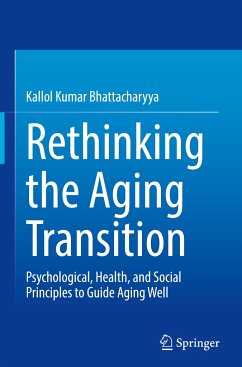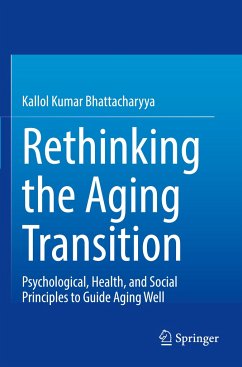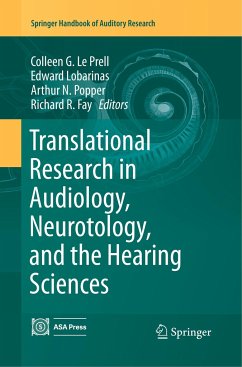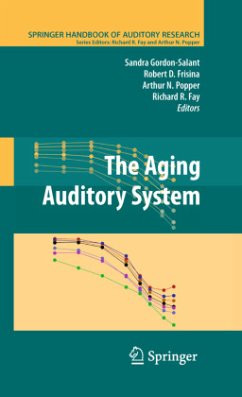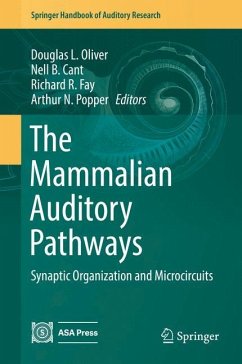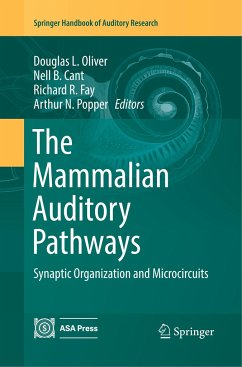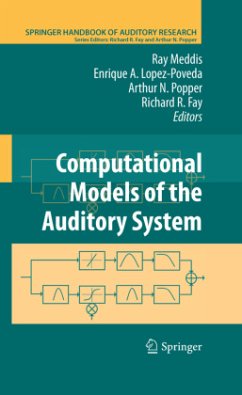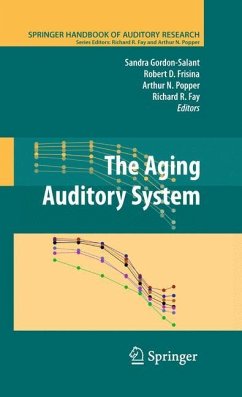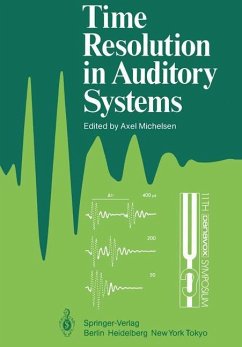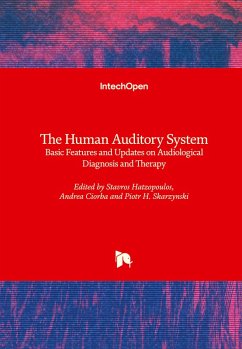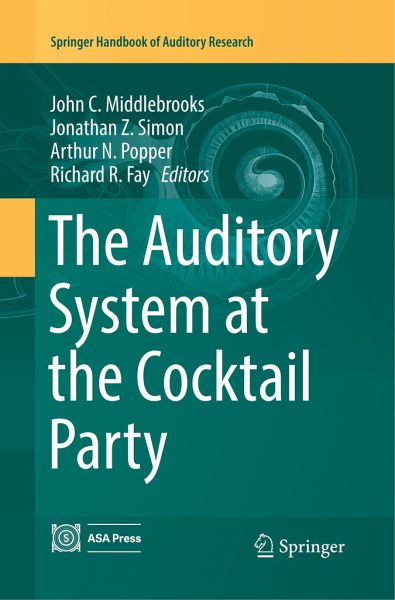
The Auditory System at the Cocktail Party
Versandkostenfrei!
Versandfertig in 6-10 Tagen
136,99 €
inkl. MwSt.

PAYBACK Punkte
68 °P sammeln!
The Auditory System at the Cocktail Party is a rather whimsical title that points to the very serious challenge faced by listeners in most everyday environments: how to hear out sounds of interest amid a cacophony of competing sounds. The volume presents the mechanisms for bottom-up object formation and top-down object selection that the auditory system employs to meet that challenge.Ear and Brain Mechanisms for Parsing the Auditory Scene by John C. Middlebrooks and Jonathan Z. SimonAuditory Object Formation and Selection by Barbara Shinn-Cunningham, Virginia Best, and Adrian K. C. LeeEnergeti...
The Auditory System at the Cocktail Party is a rather whimsical title that points to the very serious challenge faced by listeners in most everyday environments: how to hear out sounds of interest amid a cacophony of competing sounds. The volume presents the mechanisms for bottom-up object formation and top-down object selection that the auditory system employs to meet that challenge.
Ear and Brain Mechanisms for Parsing the Auditory Scene by John C. Middlebrooks and Jonathan Z. Simon
Auditory Object Formation and Selection by Barbara Shinn-Cunningham, Virginia Best, and Adrian K. C. Lee
Energetic Masking and Masking Release by John F. Culling and Michael A. Stone
Informational Masking in Speech Recognition by Gerald Kidd, Jr. and H. Steven Colburn
Modeling the Cocktail Party Problem by Mounya Elhilali
Spatial Stream Segregation by John C. Middlebrooks
Human Auditory Neuroscience and the Cocktail Party Problem by Jonathan Z. Simon
Infants and Children at the Cocktail Party by Lynne Werner
Older Adults at the Cocktail Party by M. Kathleen Pichora-Fuller, Claude Alain, and Bruce A. Schneider
Hearing with Cochlear Implants and Hearing Aids in Complex Auditory Scenes by Ruth Y. Litovsky, Matthew J. Goupell, Sara M. Misurelli, and Alan Kan
About the Editors:
John C. Middlebrooks is a Professor in the Department of Otolaryngology at the University of California, Irvine, with affiliate appointments in the Department of Neurobiology and Behavior, the Department of Cognitive Sciences, and the Department of Biomedical Engineering.
Jonathan Z. Simon is a Professor at the University of Maryland, College Park, with joint appointments in the Department of Electrical and Computer Engineering, the Department of Biology, and the Institute for Systems Research.
Arthur N. Popper is Professor Emeritus and Research Professor in the Department of Biology at the University of Maryland, College Park.
Richard R. Fay is Distinguished Research Professor of Psychology at Loyola University, Chicago.
About the Series:
The Springer Handbook of Auditory Research presents a series of synthetic reviews of fundamental topics dealing with auditory systems. Each volume is independent and authoritative; taken as a set, this series is the definitive resource in the field.
Ear and Brain Mechanisms for Parsing the Auditory Scene by John C. Middlebrooks and Jonathan Z. Simon
Auditory Object Formation and Selection by Barbara Shinn-Cunningham, Virginia Best, and Adrian K. C. Lee
Energetic Masking and Masking Release by John F. Culling and Michael A. Stone
Informational Masking in Speech Recognition by Gerald Kidd, Jr. and H. Steven Colburn
Modeling the Cocktail Party Problem by Mounya Elhilali
Spatial Stream Segregation by John C. Middlebrooks
Human Auditory Neuroscience and the Cocktail Party Problem by Jonathan Z. Simon
Infants and Children at the Cocktail Party by Lynne Werner
Older Adults at the Cocktail Party by M. Kathleen Pichora-Fuller, Claude Alain, and Bruce A. Schneider
Hearing with Cochlear Implants and Hearing Aids in Complex Auditory Scenes by Ruth Y. Litovsky, Matthew J. Goupell, Sara M. Misurelli, and Alan Kan
About the Editors:
John C. Middlebrooks is a Professor in the Department of Otolaryngology at the University of California, Irvine, with affiliate appointments in the Department of Neurobiology and Behavior, the Department of Cognitive Sciences, and the Department of Biomedical Engineering.
Jonathan Z. Simon is a Professor at the University of Maryland, College Park, with joint appointments in the Department of Electrical and Computer Engineering, the Department of Biology, and the Institute for Systems Research.
Arthur N. Popper is Professor Emeritus and Research Professor in the Department of Biology at the University of Maryland, College Park.
Richard R. Fay is Distinguished Research Professor of Psychology at Loyola University, Chicago.
About the Series:
The Springer Handbook of Auditory Research presents a series of synthetic reviews of fundamental topics dealing with auditory systems. Each volume is independent and authoritative; taken as a set, this series is the definitive resource in the field.



